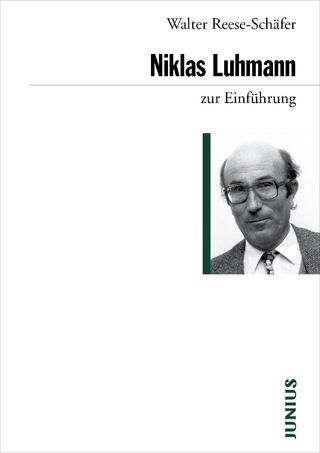
Food Chemical Hazard Detection
Wiley-Blackwell (Verlag)
978-1-118-48859-1 (ISBN)
- Titel z.Zt. nicht lieferbar
- Versandkostenfrei innerhalb Deutschlands
- Auch auf Rechnung
- Verfügbarkeit in der Filiale vor Ort prüfen
- Artikel merken
Food chemical safety remains a serious concern to the food industry. Risks such as adulteration, the existence
of toxic and allergenic compounds in foods, and poor regulation of postharvest processing indicate that food chemical safety is not fully guaranteed. With the increasing trend of globalization in the import and export of food products, the importance of employing accurate and reliable analytical instruments to rapidly detect chemical hazards in foods has become paramount. In recent years, many new applications for using a range of analytical methods to detect food chemical hazards have emerged. Food Chemical Hazard Detection: Development and Application of New Technologies aims to cover the major developments and applications in this field.
With a far-reaching scope, this book includes sections dedicated to chromatography tandem mass spectrometry, immunoassay, biophotonics, nanotechnology, biosensors and microfluidic based “lab-on-a-chip”. A team of expert authors from major academic institutions in the USA, Canada and China bring a wealth of research experiences to bear in this major new work, which will be required reading for anyone interested in food chemical hazards and their effective detection and intervention strategies.
Food Chemical Hazard Detection: Development and Application of New Technologies is aimed at a diverse audience, including food safety testing laboratories, scientists and managers in the global food supply chain, academic institutions, governmental regulatory agencies and food safety training providers. Readers will receive not only the fundamentals about different detection techniques, but will also gain insights into the current and future applications of each technique.
Professor Shuo Wang is President of Tianjin University of Science and Technology, Director of Key Laboratory of Food Nutrition and Safety, Ministry of Education of China, and Cheung Kong Scholar. He is also the recipient of Chinese National Science Fund for Distinguished Young Scholars in 2012.
List of contributors xi Preface xiii
Section I CHROMATOGRAPHY–TANDEM MASS SPECTROMETRY 1
1 Recent developments in gas chromatography–mass spectrometry for the detection of food chemical hazards 3
Renbang Zhao 3
1.1 The combination of gas chromatography and mass spectrometry 3
1.1.1 Introduction 3
1.1.2 Basic gas chromatography 4
1.1.3 Typical mass analyzers and MS detectors in GC–MS 5
1.1.4 New development in GC–MS and sample preparation 6
1.2 Analysis of pesticide residues in foods 8
1.2.1 Sample preparation 8
1.2.2 Development of GC–MS methods for the determination of pesticides in foods 12
1.3 Analysis of contaminants formed during food processing 18
1.3.1 Acrylamide 18
1.3.2 Heterocyclic amines 20
1.3.3 Furan 22
1.3.4 Polycyclic aromatic hydrocarbons (PAHs) 25
1.3.5 Tetramine 27
1.3.6 Chloropropanols 27
1.4 Analysis of environmental contaminants 30
1.4.1 Organometallic compounds 30
1.4.2 Polychlorinated biphenyls 31
1.4.3 Monocyclic aromatic hydrocarbons 34
1.5 Analysis of contaminants from packaging materials 35
1.6 Nitrite 39
Summary 40
Abbreviations 40
References 41
2 Recent developments in liquid chromatography–mass spectrometry for the detection of food chemical hazards 53
Hongyan Zhang and Jinxing He 53
2.1 Introduction to food safety detection by liquid chromatography–mass spectrometry 53
2.2 Principles and current technology of LC–MS 55
2.2.1 Extraction and/or purification of specific analytes in food samples 55
2.2.2 Typical LC conditions for LC–MS analysis 56
2.2.3 Mass spectrometry 57
2.2.4 Interface technology 58
2.2.5 Method validation and matrix effects 59
2.3 Applications of LC–MS in food safety detection 60
2.3.1 Applications of LC–MS in the analysis of veterinary drugs and growth-promoting agents 60
2.3.2 Applications of LC–MS in the analysis of pesticide residue in foods 79
2.3.3 Applications of LC–MS in the analysis of biotoxins in foods 84
2.4 Conclusion 87
Abbreviations 87
References 89
Section II IMMUNOASSAYS 103
3 State of the art immunoassay developments and application to food chemical hazards 105
Xianghong Wang 105
3.1 Development and use of immunoassay to monitor food chemical hazards 105
3.1.1 Chemical hazards in foods 105
3.1.2 Development of immunoassay in the detection of food chemical hazards 107
3.2 Design and synthesis of haptens 108
3.3 Antibody production 112
3.3.1 Elementary knowledge of antibodies 112
3.3.2 Antibody classification 113
3.4 Immunoassay formats 115
3.4.1 Antigen–antibody reaction 115
3.4.2 Immunoassay classification 120
3.5 Sample preparation from various matrices 126
3.6 Conclusion 127
References 128
4 Molecularly imprinted polymers (MIPs) – an emerging technique for chemical hazard determination 137
Qiliang Deng and Shuo Wang 137
4.1 Introduction 137
4.2 Preparation of molecularly imprinted polymers 138
4.2.1 Template molecule 140
4.2.2 Functional monomer 140
4.2.3 Cross-linker monomer 141
4.2.4 Solvents 142
4.2.5 Initiator 143
4.2.6 Polymerization technique 143
4.3 Molecularly imprinted solid-phase extraction modes 145
4.3.1 Off-line mode 146
4.3.2 On-line mode 147
4.4 Applications of MISPE in food chemical hazard determination 148
4.4.1 Determination of drug residues 148
4.4.2 Determination of pesticides 155
4.4.3 Determination of herbicides 156
4.4.4 Determination of additives 158
4.4.5 Determination of environmental contaminants 161
4.5 Conclusion and outlook 161
References 162
Section III BIOPHOTONICS 173
5 Recent developments in infrared spectroscopy for the detection of food chemical hazards 175
Xiaonan Lu 175
5.1 A brief introduction to infrared spectroscopy and its application in the food industry 175
5.2 Application of IR spectroscopy to detect chemical adulterants in foods 177
5.3 Application of IR spectroscopy to detect mycotoxins in foods 178
5.4 Application of IR spectroscopy to detect pesticides in foods 181
5.5 Application of IR spectroscopy to detect antibiotic residues in foods 181
5.6 Tips for reporting results 182
5.7 Trends in IR instrumentation 184
5.8 Trends in further applications of chemometrics to analyze IR spectra 186
5.9 Conclusion 186
References 186
6 Recent developments in Raman spectroscopy for the detection of food chemical hazards 191
Lili He 191
6.1 Introduction 191
6.1.1 Raman theory 191
6.1.2 Raman instrumentation and data analysis 192
6.1.3 Surface-enhanced Raman spectroscopy 193
6.2 Detection of chemicals in simple solvents 194
6.3 Detection of chemicals in food matrices 196
6.3.1 Detection of small chemical molecules in food matrices 196
6.3.2 Detection of large protein molecules in food matrices 199
6.4 Conclusion and outlook 203
References 204
Section IV NANOTECHNOLOGY 207
7 Engineered nanoparticles (ENPs): applications, risk assessment, and risk management in the agriculture and food sectors 209
Mahmoudreza Ovissipour, Syamaladevi M. Roopesh, Barbara A. Rasco
and Shyam S. Sablani 209
7.1 Introduction 209
7.2 Naturally occurring nanoparticles 211
7.3 Nanoparticle engineering 213
7.4 Engineered nanoparticles (ENPs) 214
7.5 Applications of ENPs in the agriculture and food sectors 216
7.5.1 Applications of ENPs in agriculture 217
7.5.2 Antimicrobial applications of ENPs 223
7.5.3 Applications of encapsulated ENPs in foods 225
7.5.4 Applications of ENPs in food packaging 225
7.6 Nanosensors 227
7.7 Impacts of ENPs on the environment 228
7.8 Risk assessment and risk management of ENPs in food technology 233
7.9 Future trends 235
References 236
8 Nanotechnology and its applications to improve the detection of chemical hazards in foods 249
Mengshi Lin 249
8.1 Introduction 249
8.2 Nanomaterials used in sensors 250
8.3 Chemical hazards in foods 251
8.3.1 Pesticides 251
8.3.2 Veterinary drugs 253
8.3.3 Bisphenol A 255
8.3.4 Melamine 256
8.3.5 Acrylamide 258
8.4 Conclusion 258
References 258
Section V BIOSENSORS 263
9 Microfluidics “lab-on-a-chip” system for food chemical hazard detection 265
Jie Xu 265
9.1 Microfluidics and “lab-on-a-chip” 265
9.2 Fluid mechanics at the microscale 266
9.3 Microfabrication technologies 269
9.4 Detection techniques 272
9.5 Representative applications in the detection of chemical hazards in foods 272
9.6 Future perspectives 279
References 280
10 Colorimetric biosensor for food chemical hazards detection 291
Jianlong Wang and H. Susan Zhou 291
10.1 Introduction 291
10.2 Detection of hazardous chemicals in foods using colorimetric biosensors based on bio-nanomaterials 293
10.2.1 Colorimetric detection of pesticides 295
10.2.2 Colorimetric detection of veterinary drugs 298
10.2.3 Colorimetric detection of heavy metal ions 301
10.2.4 Colorimetric detection of food additives 303
10.2.5 Colorimetric detection of toxins 305
10.2.6 Colorimetric detection of other hazardous chemical contaminants 305
10.3 Conclusion 306
Acknowledgments 307
References 307
Index 315
| Verlagsort | Hoboken |
|---|---|
| Sprache | englisch |
| Maße | 201 x 252 mm |
| Gewicht | 839 g |
| Themenwelt | Sozialwissenschaften ► Soziologie |
| Technik ► Lebensmitteltechnologie | |
| Weitere Fachgebiete ► Land- / Forstwirtschaft / Fischerei | |
| ISBN-10 | 1-118-48859-8 / 1118488598 |
| ISBN-13 | 978-1-118-48859-1 / 9781118488591 |
| Zustand | Neuware |
| Haben Sie eine Frage zum Produkt? |
aus dem Bereich


